Spotlight on Scotland: The Sound of Jura
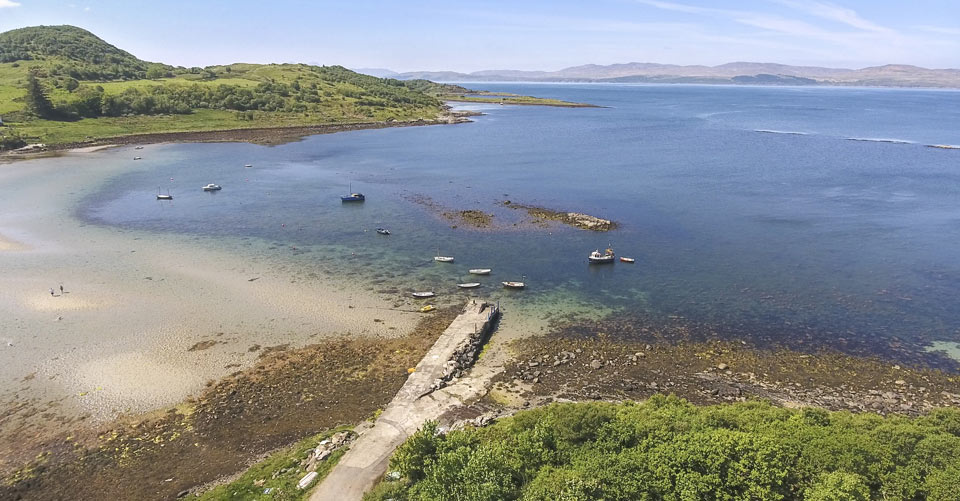
The weather in Scotland has been beautiful recently making the start of my Spring fieldwork very enjoyable – although surface water temperatures of 7 or 8℃ was a swift reminder that winter has only just left us! Last week I was very lucky to be shown around the Taynish peninsula (Loch Sween, Linne Mhuirich and the Sound of Jura) by members of the community group ‘Friends of the Sound of Jura.’ The Sound of Jura is home to some of the most fascinating and diverse marine life in Scotland and this community group seeks to protect the Sound from threats to the area’s wildlife, whilst championing the development of a local sustainable economy. The Friends of the Sound of Jura are an active member of the Coastal Communities Network, Scotland of which Project Seagrass is an Associated Organisation, and so this is not the first time I have had the pleasure of their company. The Sound of Jura and Loch Sween contain some of the most fascinating and diverse marine life in Scotland. The Loch Sunart to the Sound of Jura Marine Protected Area was established to protect the extraordinary flapper skate (Dipturus intermedia) that lives there. The Friends of the Sound of Jura are keen to point out that: “The International Union for the Conservation of Nature designates flapper skate as ‘critically endangered’, an unenviable category they share with the Sumatran rhino and mountain gorilla, meaning that the skate are among the rarest animals in the world, threatened with a high risk of extinction because of their rate of decline.” The first seagrass site we visited was Carsaig Bay (main blog photo) where there are two meadows of eelgrass (Zostera marina). The first in relatively continuous and extends broadly the width of the buoys within the bay. The second is a smaller patch which can be found towards the north of the bay. In the summer months these meadows are reportedly full of life, and I would suggest definitely worth a snorkel if it’s safe to do so – the beach is very accessible. Sandeels in Carsaig Bay seagrass meadow July 2017. Photo taken by Sound of Jura Seaweeds. The second site we visited was Linne Mhuirich. Here there are meadows of both Eelgrass (Zostera marina), and Dwarf eelgrass (Zostera noltii). The Dwarf eelgrass is especially prevalent in the small basin at the south of Linne Mhuirich and is known to play an important part in the winter diet of the whooper swan (Cygnus cygnus), the mute swan (Cygnus olor), the brent goose (Branta bernicla) and the wigeon (Anas penelope). An eelgrass meadows in Linne Mhuirich in March 2016. Photo taken by Sound of Jura Seaweeds. The final seagrass site is where the water enters/exits in the south of Linne Mhurich (where it joins Loch Sween). Here there are also eelgrass meadows around the Ulva Islands and Taynish Island. The seagrass meadow at Taynish Island in Loch Sween June 2017. Photo taken by Sound of Jura Seaweeds. Mapping our seagrass meadows is a priority for Project Seagrass in Scotland as we move towards a national celebration of our seas next year (2020 has been designated Scotland’s Year of Coasts and Waters). 2020 is a year that will spotlight, celebrate and promote opportunities to experience and enjoy our beautiful coasts and waters and at Project Seagrass we want to make sure that seagrass meadows are front and centre of that conversation – so that we can identifiy and engage with meaningful restoration work in areas where it is needed. The work of community organisations such as the Friends of the Sound of Jura are central to this effort, indeed as an organisation we couldn’t do half of what we do without the tireless efforts of individuals and communities on the ground (and in the water) who want to make a positive difference for their marine environment. So thanks again to my hosts last week for sharing their extensive Local Ecological Knowledge with me, I’ll be back to see you soon! RJ PS – YOU can help contribute to seagrass conservation by spotting seagrass in your area. Download the app at SeagrassSpotter.org
Dear Santa
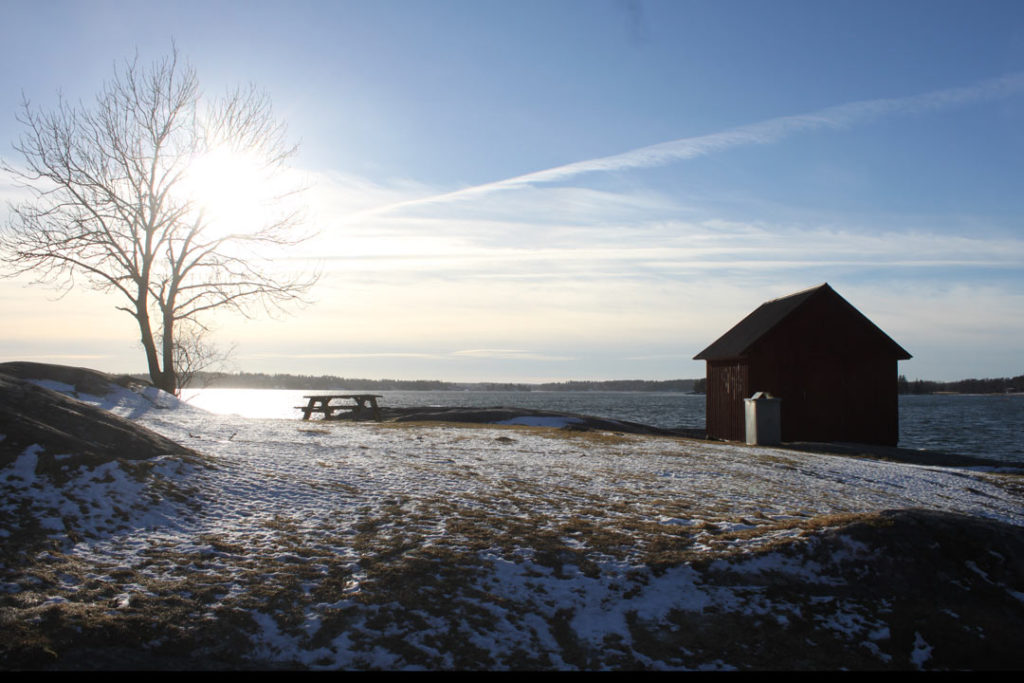
Dear Santa, We have tried to be responsible people all year. We are really hoping that this year we get the thing we have always wanted – healthy and productive oceans. We know that people haven’t looked after the oceans from the first time they were given to us, and we also know that the climate is changing and this is making us all very concerned! However, at Project Seagrass we have a plan to do our bit to help them get better. To help us achieve our aim we would like the following for Christmas this year: • We’d like seagrass meadows full of fish • We’d like everyone to know what seagrass meadows are • We’d like for everyone to know how diverse seagrass meadows are • We’d like for everyone to know where in the world all the seagrass was • We’d like for everyone to learn more about seagrass in school Finally, if you don’t think we are being cheeky, we’d like you to ask our friends in #TeamSeagrass what they would like to ask for from Santa this year, I’m sure they also have some great ideas! We’ll ask them to use the hashtag #DearSanta to collate a list for you. Thanks Santa Merry Fishmas! The Project Seagrass team.
Global fisheries threatened by loss of seagrass

Seafood consumption is both a love and a necessity for hundreds of millions of people all across the world. And the supply of seafood is a key part of maintaining food security for the whole planet. But as demand for seafood is increasing, stocks of wild fish and invertebrates (such as mussels and prawns) are declining. A major problem is that policies and plans designed to ensure the sustainability of our fisheries almost exclusively target fishing activity. But we also need to protect the critical habitats that these fisheries also depend on. Most species that are fished require more than one habitat to complete their lifecycles. For example Atlantic cod (Gadus morhua) spends its adult life shoaling in deep water, but juveniles require more stable habitat where they can hide such as seagrass meadows. So, if we want to manage stocks for sustainability, it is essential to protect the supporting habitats of targeted species. Seagrass meadows are a critical habitat supporting biodiversity and in turn the productivity of the world’s fisheries. Seagrass meadows are not only suitable for juvenile fish but also for larger fish of different species. As seagrass meadows occur in shallow, clear waters, they are an easily exploitable fishing habitat. Today, we published the first quantitative global evidence on the significant roles that seagrasses play in world fisheries . Seagrass as nursery grounds: provide a safer, less exposed, environment for eggs to be laid and young animals to find food and protection from predators as they grow. This includes commercial species such as tiger prawns, conch, Atlantic cod and white spotted spinefoot. In fact, one-fifth of the world’s most landed fish — including Atlantic Cod and Walleye Pollock benefit from the persistence of extensive seagrass meadows. Seagrass as a fishing area: it is not just large scale fishing industries that benefit from the presence of seagrass meadows. They are an easily accessible fishing ground used by small scale artisanal and subsistence fisheries around the world. Seagrass gleaning: seagrass is also essential habitat for gleaning activity, fishing for invertebrates such as sea cucumbers in water that is shallow enough to walk in. This is often done by women and children, and provides a source of essential protein and income for some of the most vulnerable people in tropical coastal communities. It is a common and increasingly visible activity, but it is not usually included in fishery statistics and rarely considered in resource management strategies. Seagrass supports other fisheries: seagrass also provides trophic support to other fisheries. They do this by creating expansive areas rich in fauna, from which there are vast quantities of living material, organic matter and associated animal biomass that supports other fisheries. Seagrasses also promote the health of connected habitats (like coral reefs), and have the capacity to support whole food webs in deep sea fisheries. Threats to seagrass, fisheries and food security: the coastal distribution of seagrass means that it is vulnerable to a multitude of land and sea derived threats. These include land runoff, coastal development, boating activity and trawling. On a global scale, seagrass is rapidly declining and when seagrass is lost associated fisheries and their stocks are likely to become compromised with profound and negative economic consequences. Seagrass meadows support global fisheries production Pdf Supporting policy and action is needed now! The importance of seagrass meadows for fisheries productivity and hence food security is not reflected by the policies currently in place. Urgent action is needed if we want to continue enjoying the benefits that healthy and productive seagrass meadows provide. Fisheries management must be broadened from just targeting fishing activity to also targeting the habitats on which fisheries depend. Awareness of the role of seagrass in global fisheries production, and associated food security, must be central to policy, and major manageable threats to seagrass, such as declining water quality, must be dealt with. Action is urgently needed to protect the worlds seagrass meadows if we are to continue to enjoy the benefits they provide.
International Women’s Day 2018: A call to #PressforProgress in recognising the role of women in fisheries
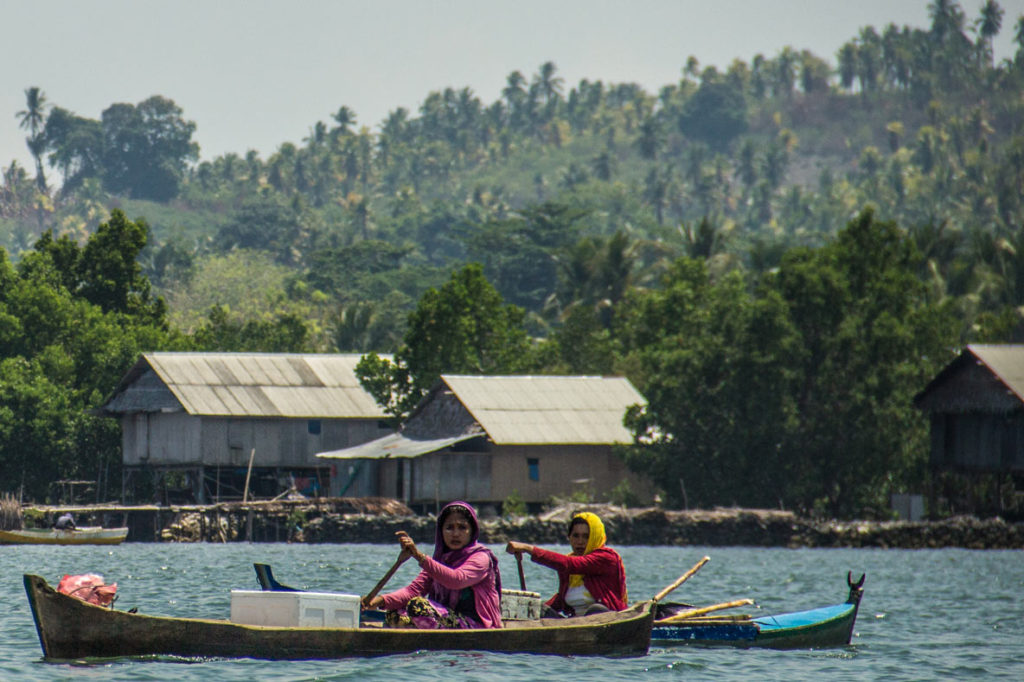
Today on international women’s day 2018 we collectively acknowledge and celebrate women’s achievements throughout history and across nations. It is also known as the United Nations (UN) Day for Women’s Rights and International Peace. Absolutely a day for shared and international celebration. Throughout history and across the world women have fought and continue to fight for equality. We are the individuals, mothers, grandmothers, great grandmothers, sisters, aunties and wives who support ourselves, our families, our friends, our countries and our planet for the most part with quiet affection and definitely not for reasons of recognition or wider acknowledgement. But it is important to recognise and acknowledge the role and achievements of all women, particularly those who are the silent backbone of their communities, where neither support nor recognition is widely offered. I could choose any number of amazing women to focus on here but would like to, very briefly, just draw attention to the women who play a significant yet quiet role in the world’s fisheries. Women play a significant role in fisheries across the globe Women (and children) are key providers for their families and communities across the globe though the work they do gathering seafood for food and for income. The fisheries involving women and children are generally low tech with minimal or no gear often where seagrass and reef flats are ‘gleaned’ by hand at low tide to collect valuable invertebrates (and sometimes fish) for food and for sale. These women and these fisheries remain ill acknowledged and unsupported by local, regional or international efforts to manage and maintain the sense of food security that they convey. But they make up a significant proportion of the small-scale artisanal fisheries that collectively contribute up to one quarter of the total global catch. These women work tirelessly to maintain a way of life or simply to provide protein and nutrition for their families. These are voices that need to be heard and have a significant role to play in the management and maintenance of local scale fisheries. A woman gleans at low tide in Indonesia These often ignored fishers can teach us all a lot about a lot of things, their ecological knowledge, dedication and hard work is something we could all learn from. So this year I would like to celebrate and acknowledge these women on this important day. I would also like to acknowledge and celebrate the amazing women who have always worked hard, led by example, encouraged (without question) and helped shape my own life (‘no matter what’). I am privileged to have and to have had these women in my life. Happy International Women’s Day!
Ocean Optimism – What is YOUR #ReasonToRun?
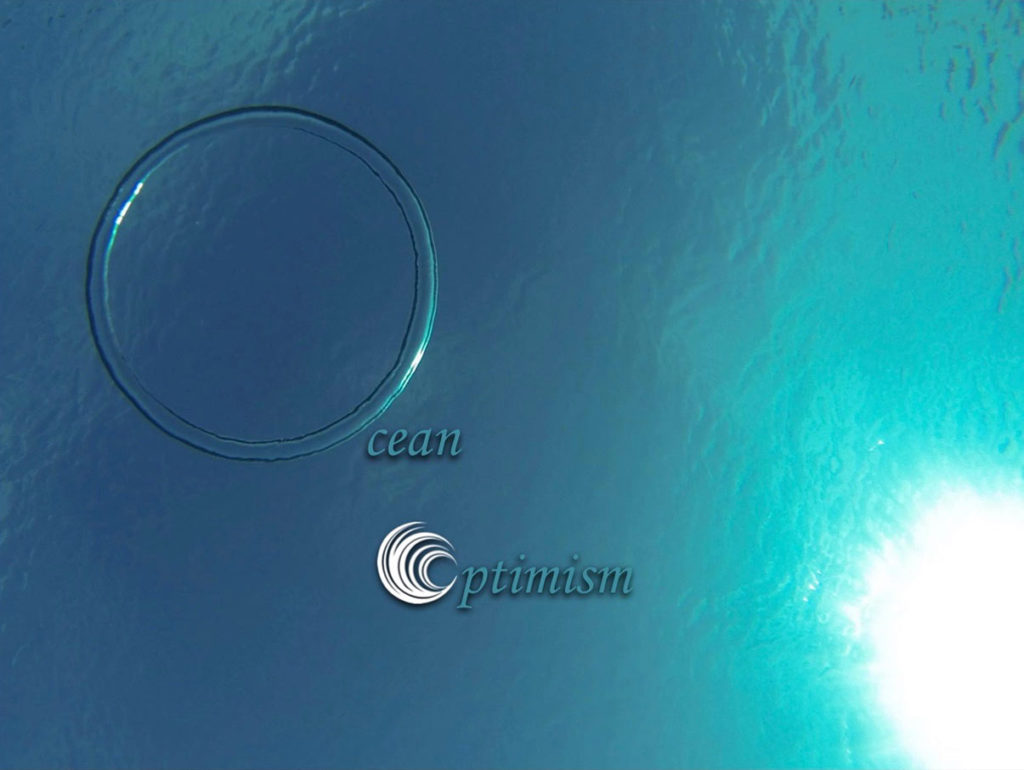
Over ONE MILLION participants have had a #ReasonToRun since the first London Marathon in 1981. The training and sacrifices involved with running a marathon are enormous, not least the amount of time it takes just to put the miles in day in day out, and the weekends that are geared all around your run! It’s a huge commitment, and yet hundreds of thousands of people run marathons every year, but WHY do they do it? For many the challenge might be personal, testing themselves physically and mentally, and pushing their own limits, yet for others it has become a recognized medium for enabling positive change, for raising money for a charity and a cause that you believe in. In this sense, the marathon is more than just a race, it’s a celebration of the more positive sides of the human character! (and I think we all need that right now) My #ReasonToRun is something that I would never have even thought about just 5 years ago, let alone be passionately supporting today, but then I guess the same could be said of many people training for these events… We all have those moments in life when we are blindsided by chance events that affect us deeply and personally. It is often these events that ignite a fire in us to ‘make a difference’ and ‘be the change’. I guess it’s about recognizing a need, and knowing that you have an opportunity to contribute to fill the void. Does that make sense? Like so many of us, my #ReasonToRun is deeply personal, I want to build a better world for my niece. For me a real gear shift happened in September 2015 with the birth of my niece. Here before me was a magical little soul being born into turbulent world. I was instantly filled with both joy and fear for her future. But why the fear? From the wider Project Seagrass team I have learnt so in the last few years about the state of our world’s oceans, about climate change, and ‘food security’ (or should that be insecurity?). But what is “food security” I hear you ask? Well, let’s take one example… If current global population projections hold true (i.e. we are right about the predicted future population), then a further 2 BILLION people are expected in Africa, Asia and Oceania by 2050. That would mean that by then an extra 75 MILLION tonnes of fish would be required on an annual basis! However, today, only 69% of marine fisheries are now biologically sustainable, which is down from 90% in 1974. Now, let us just think about it for a second, we need more and more fish each year to feed an ever growing population, even though we have less and less fish in the oceans each year!? How on earth (or in ocean) is that going to work!? I’m no scientist (or mathematician for that matter!), but even so, you don’t need a PhD to see that we can’t keep on doing things like overfishing! If I keep taking money out the bank then one day it will run out – is that not obvious!? I guess that, despite the popular saying, there are NOT plenty more fish in the sea! Another (and linked) worrying matter for me is climate change! The Great Barrier Reef was recently described as being at a ‘terminal stage’ with back-to-back severe bleaching events have affected two-thirds of the reef. It pains me to think that we could be about to lose one of great natural wonders of the world. Like Sophie (below) it certainly makes me worried about bringing new life into the world. The changing climate is the single biggest challenge facing humanity today I get frustrated because it’s not like the climate is ‘magically’ going to return to how it was before, or that somehow fish are going to fill up our seas once more! So my question you all is: Is this really the world we are leaving for our children? I find that it’s easy to get drowned in pessimism about the state of our planet. Especially with some questionable leadership in key positions at the moment! But that’s not to say that between us all our individual and collective positive actions are not making a difference. This is the mindset adopted by Project Seagrass. That of Ocean Optimism! Ocean Optimism started in June 2014 as a movement for sharing success stories, and the progress in solving marine conservaton challenges. Reaching over 60 million Twitter users since it’s inception, #OceanOptimism has inspired an international outpouring of marine conservation success stories. My #ReasonToRun is therefore fairly simple, I want to raise awareness of global food insecurity and make a difference to Project Seagrass. By raising money for Project Seagrass I hope to enable them to continue to their hard work and do my bit to ensure that a different outcome is possible. I chose Project Seagrass for two reasons. First, because seagrass combats climate change (it stores carbon dioxide underground), and secondly, because seagrass is a nursery ground for baby fish (it provides the fish we eat), so what better a habitat to support! Maybe if we can all bring a little bit of Ocean Optimism into our lives and support our marine charities then together we can change the course we are charting towards a better future… In the words of Howard Zinn. “remember, small acts, when multiplied by millions of people, can change the world.” Wish me luck for the Virgin Money London Marathon on Sunday! SJ x
March – Seagrass Awareness Month
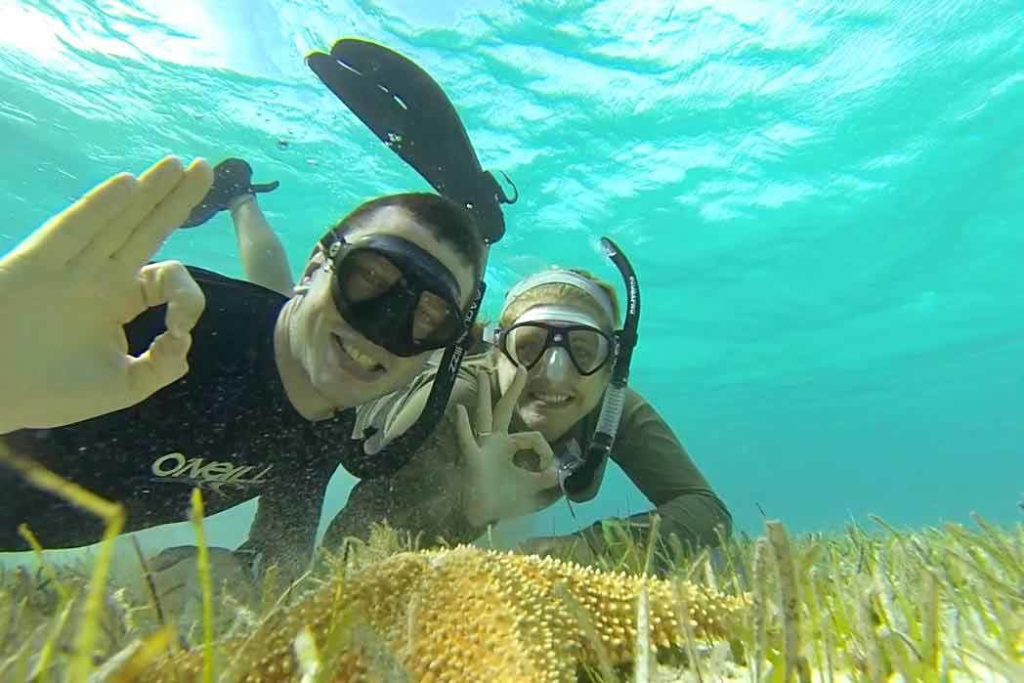
It’s only… SEAGRASS AWARENESS MONTH! ‘Seagrass Awareness Month’ has been designated as March ever since I started learning about these underappreciated ecosystems 6 years ago. However, the state-wide habitat engagement initiative appears to have been limited so far to just Florida in the USA. Why haven’t we made more of this outreach opportunity? I see no reason why, as a community, we can’t take ‘Seagrass Awareness Month’ global. Engagement this year from nations such as Norway suggests that there is appetite to build on the science communication momentum generated at the 12th International Seagrass Biology Workshop in Wales, and come together across the hemispheres to celebrate seagrass meadows! I know that as a Project Seagrass team we’ve spoken about the lack of an internationally recognised ‘Seagrass Day’. Yet, over in Texas, USA they will be celebrating their 8th Annual World Seagrass Day on the first Friday in April (April 7th, 2017). Celebrations will begin with a ‘World Seagrass Day’ parade, a state of the seagrass presentation and a half day science-based Seagrass Conference for fourth and fifth grade students from local schools. The team organizing the event estimate that just over 1,000 students will become more aware of the importance of seagrass meadows both to the local ecology and the local economy. I mean WOW! More of this is needed! Previously the Gulf of Mexico Foundation proclaimed the establishment of World Seagrass Day to be celebrated on the First Friday in the Month of March which would link in nicely with Seagrass Awareness Month. In fact, it might be worth settling on March the 1st as a day to kick-start the Seagrass Awareness Months’ festivities? Let’s get the discussion going, the World Seagrass Association will be meeting again in Singapore in 2018. Meanwhile here at Project Seagrass we’ll continue to develop our Seagrass Education and Awareness (SEA) resources. Do you like our new leaflet? We’ll be at the Edinburgh International Science Festival from the 10th-14th April and back at the Glasgow Science Festival on the 18th June. Drop in, we’ll have plenty of colouring opportunities for the kids and we’d love to chat with anyone who is keen to help us raise awareness of this essential ecosystem. Our Seagrass Education and Awareness (SEA) materials have been a hit with children It would be nice to think that by then we may have celebrated our first truly global World Seagrass Day and taken Seagrass Awareness Month to the international stage. Join the conversation, we’d love to hear your opinion. Contact us on Twitter @ProjectSeagrass or send us your thoughts at hello@projectseagrass.org. RJ
8 weeks to go! Sponsor SJ for the London, Edinburgh and Stockholm marathons in 2017.
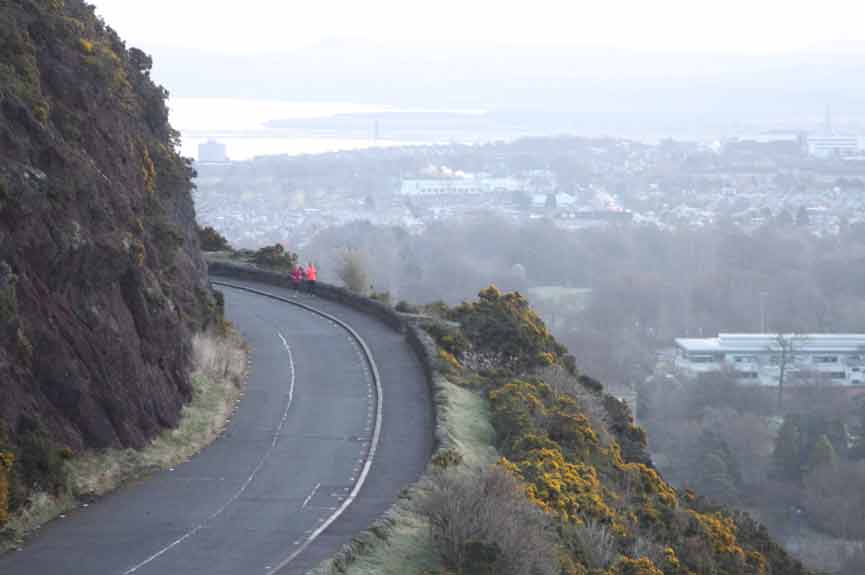
Hello again folks, So, we’re less than 8 weeks out from the London Marathon (23rd April) and the training is going well. My longest distance so far is 17 miles and we’ve got an 18-mile run in the diary for this weekend. The mornings are beginning to get lighter earlier (sunrise was at 07:08 this morning) Luckily for us, the mornings are beginning to get lighter earlier and so I am no longer starting my runs in the dark before I start work. The Edinburgh Marathon (28th May) is still a little over 12 weeks away and so there is a nice gap between the first two marathons. However, I think the real challenge will be backing up for the Stockholm Marathon (June 3rd) just a week later! We were in Stockholm this weekend, and whilst sunny it was cold! Let’s hope for a warmer marathon weekend! But why I am I doing this challenge? To raise money for Project Seagrass of course! I’m not a scientist, but I wanted to help the team in a way that I can and support them on their mission to raise awareness of seagrass meadows. Personally, I have learnt so much about these amazing ecosystems and I admire the dedication these guys have shown in growing Project Seagrass into the successful organisation it is today. I mean what an amazing achievement to build a charity from scratch whilst working full time! Surely their efforts alone are worth some sponsorship? Donate SJ x If anyone, like SJ, has a desire to challenge themselves for charity then we are all ears! Simply contact us at info@projectseagrass.org
Volunteer Update! Training for the London, Edinburgh and Stockholm marathons in 2017.
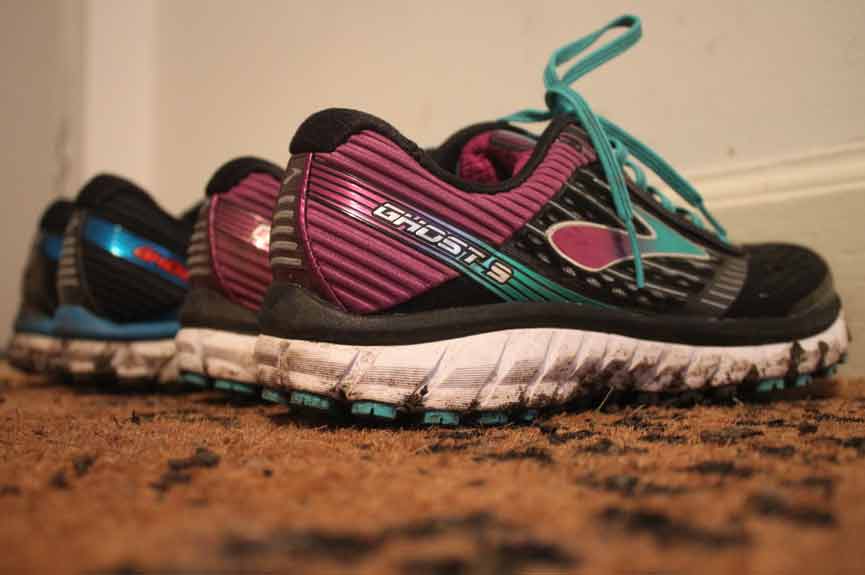
Hello! My name is Sarah Jane Pope and this year I am running the London, Edinburgh and Stockholm marathons this year to raise money for Project Seagrass. I’ll get straight to the point… You can sponsor me here! http://uk.virginmoneygiving.com/SJPopester I decided to take up this challenge because I wanted to help support Project Seagrass cause, and help the team on their mission to raise awareness of seagrass meadows. Over the last 3 and a half years I have learnt so much about these amazing ecosystems and I have been constantly impressed with the dedication these guys have shown. It has taken a lot of personal sacrifice to build a charity from scratch in your spare time! It’s incredible to see how Project Seagrass has grown, from being a small NGO based out of our living room (i’m RJ’s girlfriend), to being a registered charity in both England and Wales (1162824), and now in Scotland (SC0467) However, despite the great cause, it’s also a personal challenge for me. I have a point to prove to myself. Back in 2013 I was training for the Edinburgh marathon with RJ and his pals to raise money for WWF Scotland when on my final long run (the 20 miler) I tripped over a tree root and injured my Iliotibial band (IT Band) – gutted! So now I’m back fit again, and ready to push myself a for a good environmental cause! Back in 2013 I had to look on as the team raised funds for WWF I first announced this challenge back in November 2016, when the sun was shining and we were experiencing unseasonably mild Autumn temperatures. I was perhaps naively expecting training conditions to be similar to what they had been like when I was training before in the south-west (Bristol / Cardiff / Swansea), which although inevitably WET, were WARM (or mild at least)! However, this was not the case! Scotland can be impressively cold! On the east coast, we are sheltered from much of the precipitation, and so we do get days which are cool and crisp. On days like these it is almost a pleasure to be training… November was cold and crisp However, on other occasions, when it does rain / sleet / snow the thought of going for even just a quick 5-mile run doesn’t bare thinking about (although I begrudgingly do it anyway!). The snow can be beautiful, but it can also be brutal. Also, the romance of snow is utterly ruined, there is very little magic in running in a snowstorm, although sitting with a warm cup of tea or hot chocolate knowing that you’ve earned it go’s some way to convincing you that this was a good idea (even though you can’t feel your fingers and or your face). Anyway, I thought I’d write this quick blog as I’ve just passed a landmark in my training – the ½ marathon! On Saturday RJ and I ran 14 miles around Arthurs Seat and The Meadows and we’re both feeling good with where we are at… I’ll check in again, closer to the time, but in the meantime, sponsor me! SJ x If anyone, like SJ, has a desire to challenge themselves for charity then we are all ears! Simply contact us at info@projectseagrass.org
Three before thirty! Project Seagrass at the London, Edinburgh and Stockholm marathons in 2017.

Let me introduce ‘SJ’ (Sarah Jane Pope). SJ has been with Project Seagrass from the very start, she used to act as our secretary when we were based out of the front room of my house in Swansea; collecting post, answering the phone, and sending mail on to the relevant people… Things are a bit more formal these days! SJ has been a keen supporter of Project Seagrass since it began. SJ is a keen runner and owner of a massage company called SJ Holistics based in Edinburgh, she specializes in offering Swedish, Deep Tissue and Pregnancy Massage, but also offers general conditioning advice. Like others at Project Seagrass, SJ likes to challenge herself, and she will be blogging about her upcoming challenges on her website… which brings me to the subject of this blog post! SJ has agreed to run 3 marathons next year for Project Seagrass: The London Marathon on the 23rd April, the Edinburgh Marathon on the 28th May and then just seven days later, the Stockholm Marathon on the 4th June! The London Marathon is always well supported and a big day for charities SJ worked as a massage therapist at last years Edinburgh Marathon so has seen what it takes The idea behind the challenge is three-fold, first, SJ has never run a marathon and has always said she wanted to do “three before thirty” and with time running out she needed to get on the case! Second, she was keen to raise money for a good cause (so what better cause than Project Seagrass!?) and finally to use the marathons as a platform to raise awareness of seagrass internationally. Marathons can be great opportunities to get your charity seen by many people and so we hope to make the most of these three events! SJ has already been training in the Pentland Hills We will be hoping to collect sponsorship in the weeks ahead so make sure you check back with us to see how the training is progressing! The link to SJs sponsorhip page is here: http://uk.virginmoneygiving.com/SJPopester Personally, I have completed two marathons in my life, and one of the hardest challenges (particularly for London) is the training that needs to take place through the winter months. For SJ this marathon will be even harder than mine since she will be training through a Scottish winter! Training throughout the cold Scottish winter will be one of SJs biggest challenges I’m sure you’ll join me in thanking SJ for her continued support of Project Seagrass and wishing her the very best with her training program as the nights draw in! Good luck SJ, the seagrass thanks you! #TeamSeagrass
3 YEARS TODAY – What a difference a year makes!
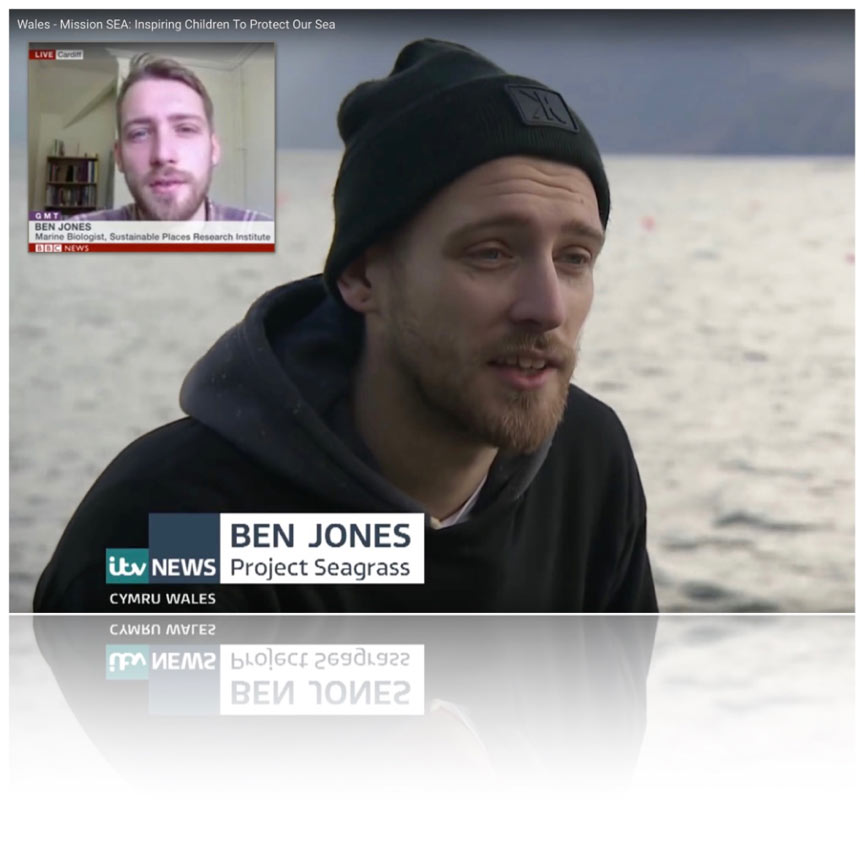
Sitting down to write this I really don’t know quite where to begin! What a year it has been, in fact, what a 3 years! Although for me it seems that soooooo much has happened in just the last 12 months! Before I start, on a personal note, I remember our second anniversary so clearly, as if it was yesterday. Just one year ago today I was in Greece on a trip to map the coastal seagrass meadows around the island of Lipsi in the Dodecanese, using our (then new) DJI Phantom UAV (I remember because my girlfriend bought me a Spanakopita with a candle in it!). It was also the day we announced our successful application to be a charity in England and Wales. Now today, twelve months on, I find myself in Edinburgh having applied for (but as yet unable to announce) our charitable status in Scotland! We had much success communicating the importance of seagrass both through newspapers and television. Since 29th July last year we have spent time working in both Greece and Sri Lanka. That was last August. Work then continued in the Wakatobi National Park in Indonesia last September followed by our annual #AutumnSurvey in Wales last October. The next major date in the calendar was then the presentation of our work at the CERF conference in the Portland, USA in November. CERF2015 was a fantastic event, and a great platform to share our success stories #OceanOptimism With just a few week back in the office we were soon back to Indonesia once more, taking us from early December and into January and the new year. Director Dr Richard Unsworth led a workshop in Makassar in collaboration with Hasanuddin University. In 2016, after returning from overseas, the new year got off to a flying start with our #WinterSurvey in Wales in February and then our subsequent success in the ITV peoples project. Director Benjamin Jones running SEA (seagrass education and awareness) activities with children from Ysgol Morfa Nefyn Our ‘official launch’ at Cardiff University took place in March, and we were thrilled by the turnout and support we received. April was über busy, witnessing the welsh #SpringSurvey, our expansion into Scotland and research trips to both Cambodia and Myanmar. Our ‘official launch’ took place at Cardiff University in March. Thanks for ALL your support! In May we were in California for a fabulous week of Zostera Experimental Network collaborations, and the first of our summer outreach activities began with a weekend at The Deep in Hull, England. Director Dr Richard Unsworth was also present at a Zostera Experimental Network gathering in Davis, California. These were swiftly followed by outreach activities at Glasgow Science Festival, Scotland in June and Kate Humbles ‘Big Day Out’ in Monmouthshire, Wales in July. The last activity was our #SummerSurvey at which we hosted a work experience student for the first time. We conducted outreach activities and training with local stakeholders and government organisations such as Natural Resources Wales and the National Trust We were also proud to support the growth of young marine ecologists both at school and University via our Work Experience and Internship programmes. We have been humbled by the support the public has shown us over the last 3 years, so thanks to each and every one of you who are helping us champion our cause. Together we really are making a difference, and providing a global platform for dedicated seagrass science communication. I look forward to continuing this journey with #TeamSeagrass and we look forward to both the challenges and successes that our 4th year in operation will inevitably bring! Starting with the International Seagrass Biology Workshop this October! We look forward to welcoming the international seagrass community to Nant Gwytheryn in north Wales this October. Keep up the good work everyone and you’ll hear from us again soon. Until then, best fishes!

